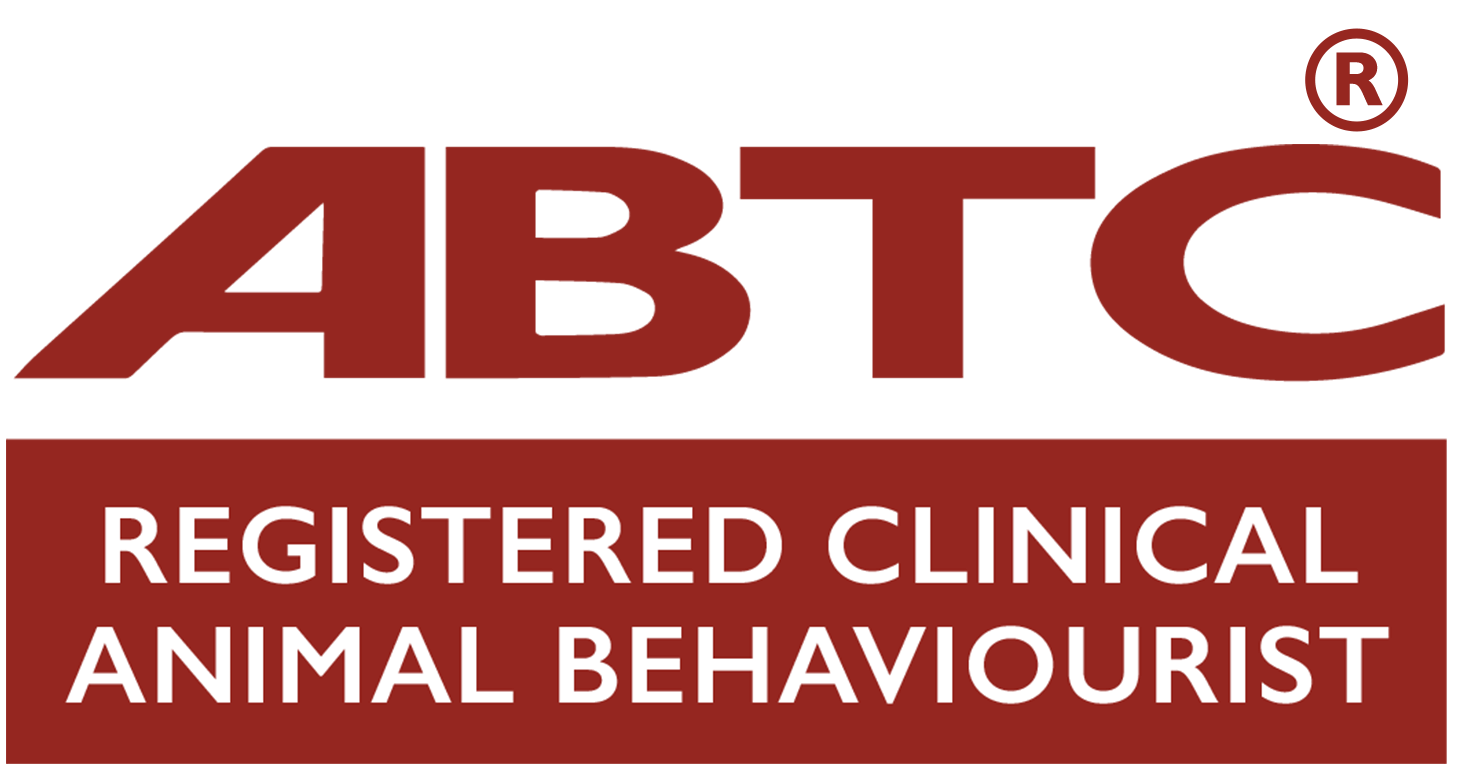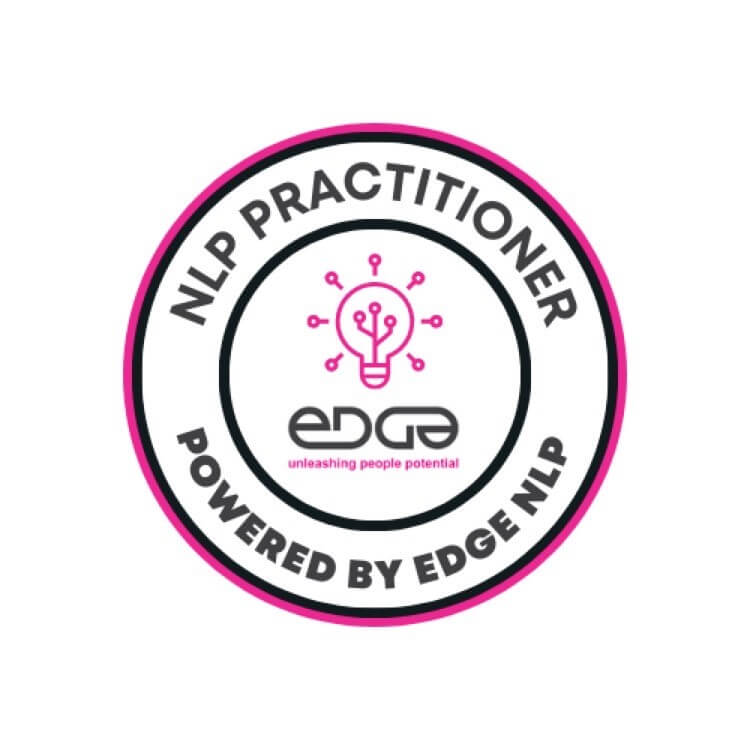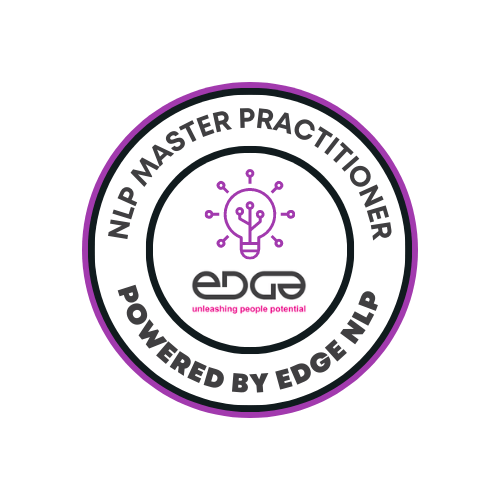Many of us get a dog for companionship, which typically includes enjoying long country walks together, and that may lead to a rewarding pint at the end in the local pub! However, pub environments can be stressful for our four-legged friends. The noise, the hustle and bustle of others around us and being in close proximity for a prolonged period of time is enough to cause any dog to bark and pull out on their lead at a passer-by. This can be exacerbated by the dog being over-tired from their walk, or by the weather if it is a warm or chilly day and we’re expecting them to remain calm and still whilst we natter to others, drink and eat. Rather than wing it, it is important to teach our pooches pub skills so they can learn to cope better in these situations. Below is a ‘ruff’ guide on how you can help with this.
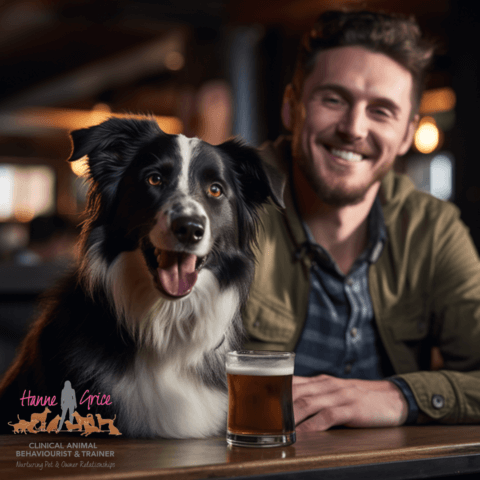
Pub dog training
Step 1: Preliminary Training at Home
Goals: Teach basic obedience cues; instil calm behaviour; get your dog comfortable with lead and harness.
1. If not already trained, start teaching your dog basic life skill behaviours and attach visual or verbal cues to these, such as “sit,” “stay,” “down,” and “leave it.” Check out my Puppy Package if you need support with key skills and more.
2. Encourage calm behaviour at home. Reward your dog when they’re in a relaxed state. Use food treats/your dog’s daily food, praise, touch (if they like that), as rewards. This will help your dog to understand that calm behaviour equals rewards. PRO TIP: To help with this, count out 50 very small food rewards/pieces of your dog’s daily kibble or whatever your dog eats, enjoys and can tolerate – see if you can use these up over the day to capture any moments of brilliance.
3.Get your dog comfortable wearing a lead and harness, if they’re not already – this is vital for public outings. If you’re struggling with teaching your dog to wear their harness, get support of a certified trainer to help you; check out the Practitioner Directory via the Animal Behaviour & Training Council.
Step 2: Habituation and Desensitisation
Goals: Get your dog used to the various stimuli they’ll encounter at a pub; gradually expose your dog to busier environments.
1. Begin by exposing your dog to sounds they might encounter at a pub. Use soundtracks of people talking, glasses clinking, music playing, etc., starting with a low volume and gradually increasing it over time as your dog gets comfortable. Look for signs such as relaxed lips, ears, soft almond shape eyes, steady breathing and choosing to lay down. When you see these signs (or no obvious signs of unease) then you can raise the volume a bar or two – go slow, work at an incremental pace. You can then aim to present these sounds via your digital device at different heights, in different rooms/the garden, transfer to surround sound and so on. By presenting them in different ways, you can build a more reliable coping response from your dog when hearing such noises.
2. Next, start to take your dog to quiet public places like a park or a quiet street, at a quiet time of day and at a distance to triggers (such as other people, dogs, wildlife, traffic, etc). Make sure you are at a distance that is comfortable for your dog – to gauge this, your dog should be able to easily disengage from what they are looking at. Use food treats/your dog’s daily diet and praise to reward your dog for calm behaviour. Aim for 3-4 times a week for as little as 2 minutes to 5 minutes at a time; allow for sniffing breaks in between. You can increase the duration of being exposed to these environments as your dog starts to show more and more signs of coping well, listening and even settling down (e.g., on the grass on a dry day).
3. Gradually expose your dog to busier environments, being mindful of your distance and how long you are exposing your dog to these triggers – always reward calm behaviour. If your dog is lip licking, yawning, shakes off as if they are wet, wants to back away, tail tucks under and or your dog begins to whine, it is time to move on as these are early signs of stress and we want to avoid overwhelming your pooch.
Step 3: Practice “Pub-like” Scenarios
Goals: Practice behaviours specifically needed in a pub environment; teach your dog to ignore food and drink; get your dog used to “pub-like” environments.
1. At home or in a quiet outdoor setting, practice sitting at a table with your dog on a lead and their harness by your side. Reward your dog for calm behaviour.
2. You can use your dog’s mat/a little rug to help with settling. This helps to become an ‘environmental cue’ for laying down/relaxing.
3. Start introducing “fake” food and drink scenarios. Set up a table with food and drink, teach your dog to ignore it using a recall cue to get them to move away from the table, as well as “leave it” cues. Always reward your dog for being successful. If they struggle with this exercise, you will need to make things easier – for example, reduce the temptations on the table, use ‘boring’ foods that give off little scent, and decrease the practice session – better to get 1, 2 or 3 great repetitions of the desirable behaviour in your dog’s ‘bank account’, than 8 or 10 mediocre repetitions where your dog cannot perform the behaviour you’re after and, therefore, cannot be rewarded. We want the dog to be successful so they can receive their reward, as what gets rewarded is more likely to be repeated going forward.
4. Start visiting dog-friendly establishments that aren’t as busy as a pub, like a garden centre – places that have plenty of space but you can practice settling down and watching people go by. Progress onto a coffee shop type environment, and continue reinforcing calm behaviour and for your dog ignoring food and drinks. Take along frozen lick mats/food enrichment toys to help build your duration of being in these environments, and where your dog can be rewarded for settling.
Step 4: Short Visits to the Pub
Goals: Gradually expose your dog to the pub environment; continue reinforcing good behaviours.
1. Choose a quiet time to visit the pub for the first time. Avoid peak hours. Practice scent work around the pub – tossing food to the ground and swiping it along fence lines calmly encouraging your dog to “find it”. This helps your dog to draw in breath as they sniff, which can help to promote calmness and trigger their pleasure-seeking system.
2. Settle yourself away from the main footfall area. Have your dog positioned away from pathways, and instead lay a mat behind you or where people cannot get close or need to pass by.
3. Keep the first visit short, such as 5 minutes or less. Explain to the barman/landlord what you are doing so they understand why you are there and what you are doing. This will help you as you will want to practice ideally 3-4 times a week if you are able to (yes – I am encouraging you to go to the pub – just stay focused on why you’re there, for your dog!). Use your dog’s mat to help with settling in the early practice sessions. Reward for calm behaviour.
4. Gradually increase the length of your visits OR decrease your distance from others. Overtime, you will be working on increasing the duration, increasing the level of distractions BUT you must work at one variable at a time. Always monitor your dog’s stress levels looking for any visual, scent or auditory signs of unease – back off if you spot any signs of stress and end your practice session.
Step 5: Maintaining Good behaviour
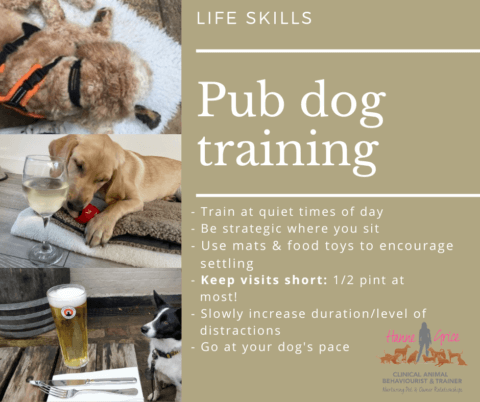
Goals: Consistently reinforce good behaviour; ensure your dog is comfortable.
1. If you have gotten to the point where you have been practicing at different times of the day, at different distances to others at your local pub, now consider visiting other places to begin the process again so you can start to ‘generalise’ your dog’s behaviour – making for more reliable responses across contexts. When going somewhere new, make sure you make the session as easy as possible – very short durations on location, maximum distance to others, and quiet time of day, to set yourself and your dog up for success.
2. Remember to reward your dog for calm behaviour with calm praise, touch (if they like) and different food treats/enrichment toys, even as they become more comfortable in the pub environment. You can slow down the rate of which you are rewarding, but avoid fading it out altogether – after all, you are getting your rewards via a glass of something and or pub grub!
3. Your aim is to have increased the durations at which you are rewarding your dog, so your dog is not so much in ‘training mode’ but is actually able to settle. This may take a number of weeks or months to get to this point – it is OK, work at your own dog’s pace. Better to go slow and get it right than rush the process and end up with the dog barking at everyone and everything!
4. Keep an eye on your dog’s body language to make sure they are comfortable. Again, if your dog is showing any signs of stress, such as panting, yawning, pacing, licking lips, going still, whining or being unable to disengage eye contact with another person or dog when called, it is time to leave. We want to avoid it getting to the point where your dog is barking/jumping around and pulling on-lead. If they are doing this, it means your dog is overwhelmed and they will not be able to ‘think’. It tells us the session was likely too long for the dog, or the dog was too close to stuff happening in their environment, and or that the number of things that was going on around them was simply too much.
5. Help break up your dog’s pub sessions when they are settling with some pottering about; practice your scent work around the pub to help build positive associations and enable ‘breathers’ via toilet breaks.
6. Always keep your dog’s well-being as your priority – you are your dog’s advocate. Remember, not every dog will enjoy being at a pub. It’s important to respect your own dog’s limits.
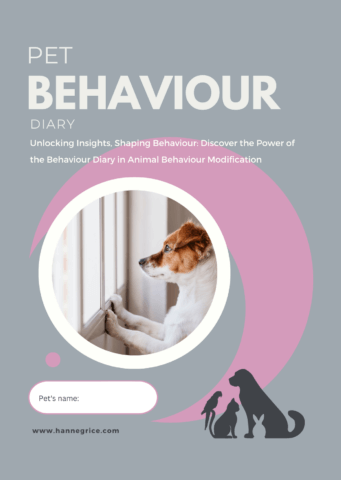
To help you plan out your training sessions and monitor your progress, use my Pet Behaviour Diary – available on Amazon priced £11.99. It contains tips, three months of monitoring and prompts to review.
PRO TIPS:
- Make sure to bring your dog’s rewards with you.
- Keep water available for your dog.
- Give them regular toilet breaks and chances to potter about away from the hustle and bustle.
- Ensure your dog is not bothering other customers or their pets. Sit far away from key footfall areas. And, be prepared; take your dog’s mat/rug with you, any frozen food enrichment toys/long-lasting chews, and so on.
Happy training!
Learn more about our classes

Get Hanne's Book
Playing With Your Dog will help any dog owner work out the games that are best suited for their pet to play throughout his life, from puppyhood to old age. The book also shares some tricks for all ages, group activities, and recommended toys that dogs will enjoy.




















